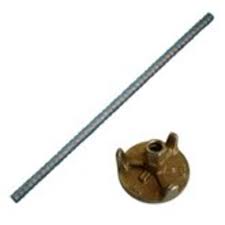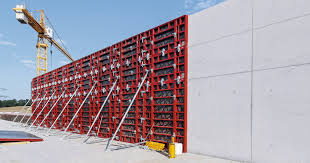чэрв . 06, 2025 17:10 Back to list
Premium Timber & Plastic Column Formwork Manufacturer & Exporter
- Technical advantages and performance data of modern column formwork
- Comparative analysis: Timber versus plastic formwork specifications
- Industry-leading timber column formwork manufacturing expertise
- Global plastic formwork exporters revolutionizing construction
- Tailored solutions for complex structural requirements
- Case studies demonstrating project efficiency gains
- Future trends in column formwork technology

(column formwork)
The Evolution of Column Formwork in Modern Construction
Column formwork serves as the critical skeletal framework that determines structural precision in concrete construction. Recent technological advancements have transformed traditional systems into sophisticated engineering solutions meeting modern demands for efficiency and accuracy. The global formwork market has demonstrated robust growth, with projections indicating expansion from $7.8 billion in 2023 to $10.9 billion by 2028 at a 6.9% CAGR, according to industry analytics. This growth trajectory underscores how column formwork innovations now prioritize both economic and technical considerations across varied construction environments.
Modern applications increasingly leverage adaptable formwork systems capable of handling complex geometries without compromising structural integrity. The transition from conventional methods to engineered solutions reflects a broader industry shift toward resource optimization and waste reduction. Among notable developments, engineered timber and high-performance plastic systems demonstrate significant advantages over traditional materials.
Engineering Breakthroughs in Formwork Performance
Contemporary column formwork systems have achieved remarkable precision tolerances between ±0.5mm to ±1mm per meter, reducing remedial work by up to 75% on vertical elements. The surface quality obtained directly from plastic formwork consistently reaches Class B standards without additional treatment. These performance gains stem from critical engineering features:
- Advanced release mechanisms minimizing surface abrasion
- Modular designs reducing assembly time by 60-70%
- Integrated bracing systems ensuring precise vertical alignment
- Material technologies achieving up to 200+ reuse cycles
Field studies document 35% labor hour reduction with optimized panel systems compared to conventional formwork. The most significant productivity gains occur at the interface between foundation and vertical elements, where specialized column shoes accelerate transitions by eliminating complex propping requirements.
Material Performance Analysis
Modern construction utilizes two primary materials for column structures, each offering distinct advantages depending on application requirements.
| Performance Metric | Timber Formwork | Plastic Formwork |
|---|---|---|
| Reuse cycles | 15-30 cycles | 150-200+ cycles |
| Panel weight (kg/m²) | 28-35 | 18-22 |
| Surface finish class | Class B (after treatment) | Class A-B (as-struck) |
| Assy time/sq.m (min) | 45-60 | 25-35 |
| Moisture absorption | 9-12% | <0.5% |
| Carbon footprint/cycle | 12.8kg CO2 | 6.4kg CO2 |
The data underscores plastic's superiority in repetitive applications while timber maintains relevance for specialized projects. Thermal expansion coefficients remain particularly favorable for polymer systems, maintaining dimensional stability within ±0.05mm/m under temperature fluctuations of up to 50°C.
Timber Formwork Expertise
Leading timber column formwork manufacturer operations now employ CNC machining to create tolerance-controlled components within ±0.3mm accuracy. These precision-engineered timber systems enable exceptional adaptability for irregular structural geometries while maintaining the material's traditional benefits:
- Engineered plywood panels withstand 2.5x greater lateral pressure
- Integrated corner systems eliminate leak points through compression sealing
- Modified surface treatments boost moisture resistance beyond 200 hours
Manufacturers have optimized their solutions for heavy-use columns exceeding 800mm diameter, where specialized clamping systems distribute up to 90kN/m² concrete pressure without deflection. This engineering addresses the critical failure point of traditional timber systems through ribbed reinforcement patterns.
Polymer Revolution in Vertical Forming
Global plastic formwork for column exporter networks distribute advanced systems incorporating glass-fiber reinforcement to achieve deflection limits below 1/1000 of span under maximum hydrostatic pressure. Leading companies have established manufacturing protocols allowing customization without sacrificing performance attributes:
Premium plastic formwork for column systems feature copolymer compounds with 45% glass fiber content, increasing impact resistance five-fold compared with standard polypropylene. These advanced polymers maintain full mechanical properties within temperatures from -25°C to 80°C, ensuring consistent performance across global construction sites. The surface release chemistry incorporated during manufacturing creates a hydrophobic barrier that eliminates concrete adhesion issues, particularly beneficial in accelerated curing environments.
Custom Engineering Solutions
Complex construction challenges demand tailored approaches beyond standard formwork kits. Integrated engineering teams develop application-specific solutions for unconventional projects:
- Tapered column systems with adjustable corner angles from 60° to 135°
- Curvilinear formwork panels for architectural concrete features
- Composite assemblies accommodating services integration
For Burj Al Alam Tower construction, customized circular column formwork achieved daily cycle times of 18 hours for 4.8m high pours while maintaining 0.25mm/m verticality. This project-specific solution integrated hydraulic fine-adjustment mechanisms and embedded sensors monitoring real-time concrete pressure during placement.
Innovation Pathways for Column Formwork
The integration of smart technologies represents the next frontier for column formwork systems. Sensor-embedded panels now actively monitor variables including concrete temperature, pour rate, and lateral pressure, transmitting real-time data to construction management platforms. These monitoring systems reduce inspection requirements by up to 40% while improving quality assurance metrics.
Material science continues advancing thermoplastic formulations with nanoparticles enhancing mechanical properties without increasing weight. Emerging polyamide composites demonstrate 45% greater tensile strength than current systems. These innovations ensure that modern timber column formwork manufacturer and plastic formwork for column company solutions will continue elevating concrete construction efficiency, particularly for complex vertical elements.

(column formwork)
FAQS on column formwork
Q: What is column formwork used for?
A: Column formwork is a temporary structure that molds and supports wet concrete during curing, ensuring precise column shapes in construction projects like buildings. It enhances accuracy and safety while reducing defects.
Q: Why choose a timber column formwork manufacturer?
A: A timber column formwork manufacturer provides sustainably sourced, customizable formwork solutions that are cost-effective and eco-friendly. They ensure durability and tailored designs for varied construction needs.
Q: What does a plastic formwork for column exporter offer?
A: A plastic formwork for column exporter distributes high-quality, lightweight systems globally, enabling faster assembly and reusability. This reduces shipping costs and waste, making them ideal for international projects.
Q: How does a plastic formwork for column company support clients?
A: Such a company focuses on innovative plastic formwork designs that are easy to maintain and recyclable, saving time on-site. They provide technical support and customization for seamless concrete pouring.
Q: What are key benefits of plastic formwork over timber for columns?
A: Plastic formwork is more reusable and lightweight, requiring less labor than timber. It resists moisture and chemicals, making it durable for repetitive use in modern construction environments.
-
High Quality Climbing Formwork for High-Rise Building & Core Wall Solutions
NewsJul.25,2025
-
High-Quality Slab Formwork Solutions for Efficient Construction
NewsJul.24,2025
-
High-Quality Wall Formwork Systems for Versatile Concrete Construction
NewsJul.23,2025
-
Climbing Formwork Solutions for High-Rise Construction Efficiency
NewsJul.22,2025
-
Premium Table Formwork for Slab Construction | Reusable & OEM Support
NewsJul.22,2025
-
Heavy Duty Props EN1065 Certified - Adjustable Steel Shoring for Formwork
NewsJul.21,2025